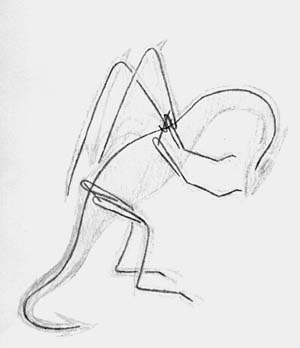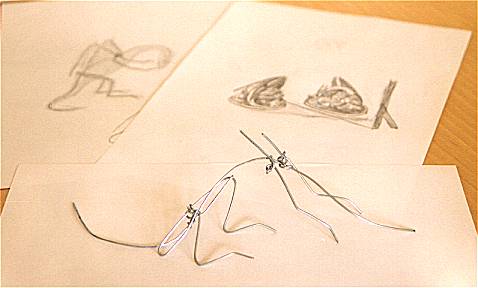
Armature for a dragon
The previous pages gave you an idea on the typical fantasy/AD&D dragon: lots of scales, muscled
legs, clawed feet. In this case study, I'll create on of those typical dragons
Take a fairly thick piece of iron wire and stretch it to the length of the dragon you want
(from head to tail). This will make the backbone of the dragon. Take some smaller pieces
of wire for the arms, legs and wings and attach them to the backbone as shown
in the sketch.
|

|
You now have a basic dragon wire frame, but it's not the muscled (or fatty) dragon you want. So now it's time to stuff your dragon. For small model: use tinfoil. For bigger models: use styrofoam or wire mesh. I haven't used wire mesh myself, but it is supposed to work nicely. It might also work for the wings.
When you've fleshed out your dragon, cover it completely with tinfoil. Again, I haven't used wire mesh myself so I don't know if you need to do this with mesh too. Below is the finished wireframe for the dragon. It's done with some fairly thick wire, so I had to use a pair of thongs to bend it. I didn't do the wings, but I left part of the legs sticking out at the top to attach te wings to later on.

Cover the wireframe in tinfoil. Make sure you add some crammed up tinfoil to the belly and neck to create a full bodied armature. It saves you on clay later on.
